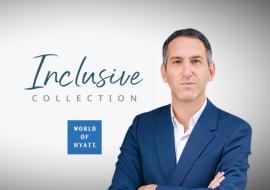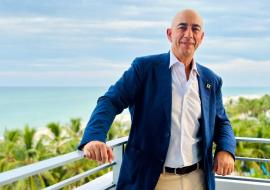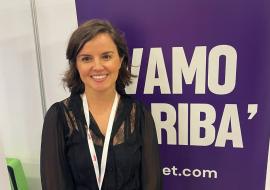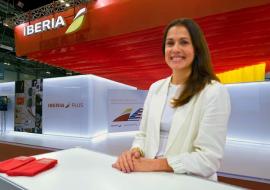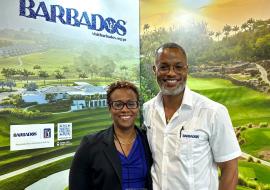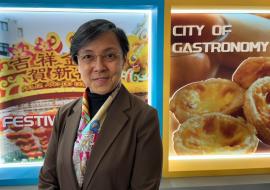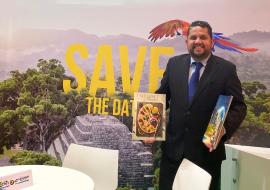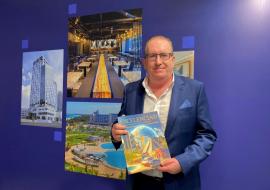Q & A with Juan Maqueda, from the TSTT Steering Committee

Today we have the pleasure of interviewing Mr. Juan Maqueda, one of the Latin leaders in the world of marketing in the United States.
A communications and creativity professional, who moves between different aspects related to a constantly changing world, its evolution and the best way to communicate, he explores the most creative and innovative ways to achieve the famous "engagement" of audiences and consumers.
Founder of the LatamOne Agency in 2006, an integrated marketing and communications agency that focuses its work in Latin America and the United States.
Dear Mr. Maqueda, what do you think are the most significant changes in the marketing industry in recent years?
First of all, I would like to start by thanking you for giving me the opportunity to exchange ideas and thoughts on communication, strategy, marketing and tourism, which I am very passionate about.
Going back to your question, the marketing industry is a big title that encompasses around "The" multiple elements to take into account, many of which are in a state of permanent evolution and this is the first answer to your question.
On the other hand, perhaps the most significant change in the industry has come from digital transformation, and although this answer is not new, its effects are still the biggest factor of change that forces us to be constantly aware and informed.
I will be more precise and mention some of these changes,
-
The data and information that all digital platforms give us nowadays provide us with very valuable elements when it comes to analysing behaviours and messages.
-
The transformation of the media has changed the way we plan and plan campaigns,
-
The digitalisation of outdoor advertising (OOH) allows us to programme campaigns intelligently, according to the day, time, climate and profile of the audience they reach,
-
Content and its multiple audiovisual formats that are broadcast on open, paid, subscription or on-demand channels such as video on demand (VOD) platforms,
-
Commercial channels (retail) and all their formats such as mass, niche or specialised channels,
-
E-commerce, market places, live shopping and the end of sales frontiers with their global markets,
-
Social networks such as Facebook, Instagram, Twitter, Twitch, Tik Tok, Linkedin and Youtube,
-
The new protagonists brought by these networks such as Influencers and Streamers, whose messages reach millions of viewers,
-
The convergence of multiple screens that we consume on a daily basis, such as home screens, mobile phones, tablets or big screens in public spaces.
-
The consumer and his or her consumption habits, linked to sustainable, ecological or organic,
and lastly, I would like to mention perhaps the most relevant of all, which comes hand in hand with improved health, increased life expectancy, social aspects, and which is transversal to all the preceding points and which many of us call the Audience Revolution, and that is how today there are 5 generations of potential viewers, very different from each other and very active, who think, consume and generate content permanently and this has been a "Game Changer" as we usually call it, it is something never seen before where we all have to adapt to learn and work with each of them.
What do you think is the current situation of the tourism industry in Latin America and in the world in general?
I think we must differentiate the worlds, because multiple realities coexist, in general we are observing that all the indices of the sector are improving and returning to the pre-pandemic reality.
Now, going to the particular, Latin America is a region with immense potential, with a wide diversity of natural and cultural attractions, which has oases (so I call it) of development, distributed throughout the continent, some countries handle it better than others, but in general the industry does not reach its full potential, it is latent, and if it were taken as a strategic factor of development its economic, social and cultural impact would be incredible.
On a global level, after the pandemic and leaving the area of influence of the war in Ukraine in a parenthesis, we see how the industry is being reactivated in its different destinations.
Tourism and leisure are becoming more and more interrelated. What do you think are the keys to the tourism industry?
I think that the best experiences and experiences that we can give the visitor are the basis of success and that they will leave a strong and close memory, making it a relevant factor when undertaking their next trip or recommending it.
Why do you think marketing is important for tourist destinations in the current situation and where is this relationship heading?
Because in a hyper-communicated and connected world, destinations compete more and more every day to reach the visitor's mind, added to a wide offer and variety of destinations, it requires the person responsible for the area to execute comprehensive plans; that contemplate a consistent and planned communication strategy, covering multiple communication channels, various content formats, variety of messages and actions, taking into account that today we do not speak to a single receiver, and as we have already mentioned, we have 5 types of audiences that we must reach, with different tastes and motivations that we have to attract.
It is undoubtedly a very big challenge for those who take on this management and it is natural that they rely on multidisciplinary teams to analyse, plan and activate these plans.
I believe that this relationship will grow and it will be necessary to have specialised professional teams to achieve real results.
Do you feel that many tourism destinations have a lot of improvisation in their marketing programmes?
I don't feel comfortable talking about destinations in general, but I do believe that there are many that have undeveloped or underexploited potential and that is where we see an incredible opportunity to work and make a real impact to develop the industry and generate growth and development for the destination.
According to you, how do you start a marketing plan in a prototypical tourist destination?
With an in-depth diagnosis, as broad as possible and involving all sectors, because the most important thing is to know what the starting point is, and then chart the path towards a short, medium and long term objective.
I do think it is fundamental to emphasise that for a marketing plan to be successful, the planning has a 1% incidence, now in its execution lies 99% of the success.
Do you think that, in general, the managers of tourist destinations and the tourism industry have defined objectives, or is it up to you, the companies specialising in marketing and social networks, to support this definition?
Yes, I believe that destinations generally define their objectives well, but nowadays, given the amount of information and variables to consider, specialised companies have a great role to play in deepening this definition and sometimes redefining it based on the analysis of the different variables.
According to you, what are the objectives of a tourism communication plan?
To position the destination and to be able to be connected with the future visitor, understanding that the choice of a destination begins long before the click to pay for the ticket.
And at this point is where I want to emphasise the concept of the Audience Revolution that we defined earlier and that will be the strategy of how we are going to reach and attract the different audiences that we define as public. This is the first challenge of any tourism communication plan, where the communication that we generate becomes a central element when it comes to delivering the message. The clear objective is to connect and transform audiences into loyal followers, so that they become spectators of our stories and potential future visitors.
After a pandemic like the one we have experienced, do you think that the definition of the target public for a tourist destination has become more complicated or restricted?
I believe that there are consumer habits or aspects of service that have been installed as a new standard in the sector and that there is a revaluation of the quality of attention and service, but without a major change in the definition of the target public.
As the president of the TSTT, Mr. Antonio Santos, says, "mixing product and feelings is an art", in this same line of post-pandemic world, what is the situation of the so-called emotional tourism communication?
I agree with my friend Antonio, but I also believe that this communicative strategy is still in its infancy, there are some glimpses as examples, but there is still a lot to do in terms of communication.
Now, I do believe that there is a new content, which is user generated content, the new and great protagonist of tourism communication, where the experiential and emotional is central, but this flood of communication is very difficult to direct, on the contrary, very prone to incentive and stimulation to amplify its creation.
Do you consider that the pandemic has introduced changes in the behaviour of tourists and travellers, or has everything remained relatively unchanged after the lifting of travel restrictions?
Based on my experience, I believe that the pandemic will be forgotten, something distant that people will gradually erase from their memory, but that it will leave ingrained lessons in our subconscious, such as the issue of health, personal care and the need to visit destinations with adequate infrastructure. I believe that nowadays people are very aware of these aspects.
Tourism, culture, society, economy, are very related issues, how can marketing professionals work in a balanced way all the issues derived from these topics?
By listening, analysing and understanding that everything is connected and that any decision or action we take will impact in some way on all actors in society, and this is a major challenge given that with today's connectivity the effects of these decisions reach and have immediate repercussions locally and internationally.
Given your experience, what is new about the Tourism and Society Think Tank for the tourism industry?
There are two themes I would like to highlight from the TSTT.
The most important is that as a professional group we define a purpose that brings us together behind a great objective, to promote the Tourism Industry in order to collaborate in the economic, social and cultural development of society. We know that this sector is an activity that multiplies and integrates multiple sectors of the economy and generates growth and development, which is why we must encourage, promote and professionalise it.
The second and no less important point to highlight is that the diversity of the professional profiles that make up the TSTT allows us to have a broad and deep perspective when approaching and analysing a project, perhaps something unique in our sector.
When you ask some of your colleagues in the TSTT, they all agree on your important contributions, do you think that the coordinated work will serve to...?
Collaborate, learn and grow in the various areas of knowledge, which will allow us to nourish ourselves with the best information to create unique initiatives and come up with the best proposals for the sector.







